
15 Best Spanish Books for Young Adults
Books for young adults (often called YA) are booming.
Even adults love books that were intended for teenagers and it’s no wonder why: They often feature fantastical, immersive worlds that transport you to faraway lands.
But whether you are an adult or a teenager, these books for teens can do so much more than provide you with the escapism you need to forget about your problems—they can also help you improve your Spanish skills!
Read on for 15 Spanish books that are bestsellers and highly acclaimed while also being great practice material for Spanish learners.
Contents
- 1. “Cajas de carton: Relatos de la vida peregrina de un niño campesino”
- 2. “Copo de algodón”
- 3. “La ciudad de las bestias”
- 4. “Bajo la misma estrella”
- 5. “Los Juegos del Hambre”
- 6. “Harry Potter y la piedra filosofal”
- 7. “Los ojos de Carmen”
- 8. “Marina”
- 9. “La sombra del viento”
- 10. “Hacia el fin del mundo: Trilogía del Malamor #1”
- 11. “…y no se lo tragó la tierra”
- 12. “La casa en Mango Street”
- 13. “Como agua para chocolate”
- 14. “Corazón tan blanco”
- 15. “Rayuela”
Download: This blog post is available as a convenient and portable PDF that you can take anywhere. Click here to get a copy. (Download)
1. “Cajas de carton: Relatos de la vida peregrina de un niño campesino”
Author: Francisco Jiménez
This literally translates to “Boxes of Cardboard: Stories of the Pilgrim Life of a Peasant Child,” but the English title is “The Circuit.” It’s an autobiographical tale of a migrant worker who works in California fields with his family.
Along the way, the family faces poverty, back-breaking work and seemingly insurmountable challenges. The story is told from the perspective of a young boy.
The book is organized as a series of short, digestible stories, so it’s ideal for intermediate Spanish learners or intrepid beginners.
2. “Copo de algodón”
Authors: María García Esperón and Marcos Almada Rivero
“Copo de algodón” (Cup of Cotton) is a short historical fiction novel for young readers.
Set in the Aztec Empire, the story follows Copo de Algodón, the daughter of royalty. Through her eyes, the novel presents major events such as the arrival of Spanish conquistador Hernán Cortés and the death of Moctezuma.
This novel will help intermediate and advanced readers learn historical vocabulary. It also provides an interesting glimpse into Mexican history.
3. “La ciudad de las bestias”
Author: Isabel Allende
“La ciudad de las bestias” (City of Beasts) is the first novel in a trilogy. It’s a coming-of-age, magical realist novel with political commentary.
The story follows a 15-year-old who goes on an expedition with his grandmother to hunt for a famed “beast” in South America. However, along the way, he faces many challenges such as a jaguar encounter and a kidnapping.
The story is long and relatively complex, so it is best for intermediate to advanced Spanish students.
4. “Bajo la misma estrella”
Author: John Green
“Bajo la misma estrella” (Under the Same Star) is the Spanish-language version of the John Green YA classic “The Fault in Our Stars.”
It’s about a teen dying from cancer who falls in love with another teen with cancer. It is both funny and sad.
Reading the Spanish version of a book you are already familiar with makes it easier to follow. It’s appropriate for intermediate and advanced Spanish students, though beginners who know the original story may be able to follow along.
5. “Los Juegos del Hambre”
Author: Suzanne Collins
“Los Juegos del Hambre” (The Hunger Games) is the first book in the trilogy of the same name.
This modern dystopian classic follows 16-year-old Katniss Everdeen as she participates in a televised fight to the death.
The novel is appropriate for grades eight and up, so it is best for intermediate to advanced Spanish students. However, beginners who are particularly familiar with the story may also be able to follow it in Spanish.
6. “Harry Potter y la piedra filosofal”
Author: J. K. Rowling
“Harry Potter y la piedra filosofal” (Harry Potter and the Philosopher’s Stone) is the first novel in the well-known Harry Potter series.
This novel follows famed boy wizard Harry Potter as he begins his studies at a wizarding school.
It uses a fair amount of magic-related vocabulary that is specific to the series. But while some of the language may be too advanced for beginners, it’s still a good option for testing the waters of reading teen books in Spanish.
7. “Los ojos de Carmen”
Author: Veronica Moscoso
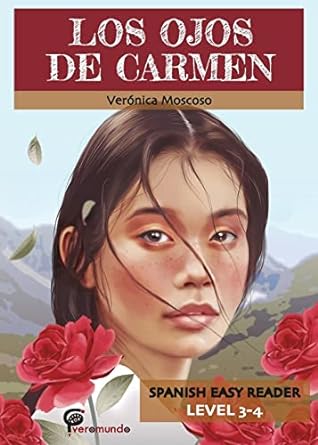
“Los ojos de Carmen” (The Eyes of Carmen) is a novella intended for intermediate-level teenage Spanish students.
It follows a teenager who travels to Ecuador and wants to participate in a photography contest.
Because it is intended for Spanish learners, it offers fairly simple language and has an easy-to-follow plot. This makes the book ideal for anyone intimidated by longer novels. While it is intended for third-year high school students, the simple language is also approachable for beginning students.
8. “Marina”
Author: Carlos Ruiz Zafón
“Marina” is a Gothic mystery set in Barcelona in 1980.
A teenage boarding school student goes to a seemingly deserted part of the city. He ultimately meets Marina, who shares his love of mysteries. Together, they go to a graveyard and witness a woman laying a rose on an unmarked grave. Trying to trace her leads them to an eerie greenhouse and eventually a number of creepy and eccentric characters.
“Marina” is an ideal choice for intermediate and advanced Spanish students.
9. “La sombra del viento”
Author: Carlos Ruis Zafon
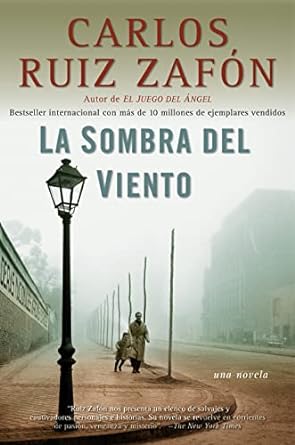
“La sombra del viento” (The Shadow of the Wind) is another Gothic mystery written by Carlos Ruis Zafon that’s set in Barcelona.
It follows Daniel Sempere, who becomes intensely curious about an obscure writer, Julian Carax, with a shadowy past. He then becomes caught up in a mystery involving Carax’s works and starts encountering people who seem to come straight from the novels.
The language is more complex than “Marina,” so it’s mainly for advanced Spanish learners.
10. “Hacia el fin del mundo: Trilogía del Malamor #1”
Author: José Ignacio Valenzuela
“Hacia el fin del mundo: Trilogía del Malamor #1” (Towards the end of the world: Trilogy of Malamor #1) is the first book in Valenzuela’s “Malamor” series.
When a university student’s best friend goes missing, she must find her friend and uncover whether the legend of “Malamor,” a town whose residents are cursed to be forever loveless, is true.
“Hacia el fin del mundo: Trilogía del Malamor #1” is great for intermediate and advanced Spanish learners.
11. “…y no se lo tragó la tierra”
Author: Tomás Rivera
“…y no se lo tragó la tierra” (…and the earth did not swallow him) is a 1971 novel told as a series of short stories and vignettes.
Set in Texas in the 1940s and 1950s, the stories focus on Mexican-American migrant farm workers. The novel details the harsh conditions faced by various young protagonists.
While it covers some fairly heavy material, the use of short stories and vignettes make this book approachable for beginning through advanced students.
12. “La casa en Mango Street”
Author: Sandra Cisneros
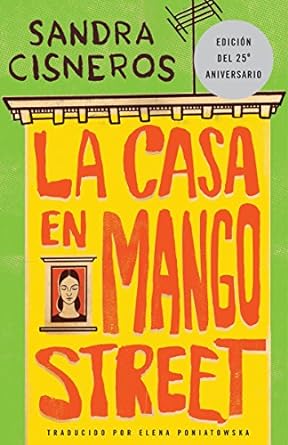
“La casa en Mango Street” (The House on Mango Street) is another novel that’s more learner-friendly because it’s told in short snippets. Esperanza Cordero is a Latina girl who lives in a small, dilapidated house in a low-income neighborhood in the US. Even while young, Esperanza aspires for a better life, and she makes thoughtful observations about the lives of her neighbors, which gets you thinking about themes like poverty and racial discrimination.
It’s great reading material for intermediate and advanced Spanish learners.
13. “Como agua para chocolate”
Author: Laura Esquivel
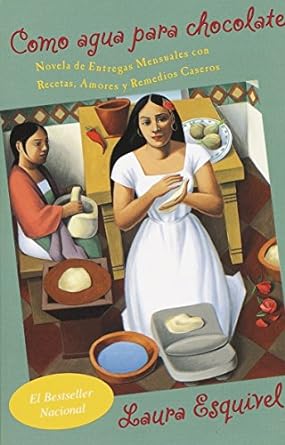
“Como agua para chocolate” (Like Water for Chocolate) is a classic Mexican novel that portrays a young girl’s struggle for more freedom in her life. Tita is in love with Pedro, but because of family traditions, he ends up marrying her eldest sister instead. Since she can’t express her emotions outwardly, she pours out her passions in the kitchen instead.
Intermediate to advanced learners would do best with this book since it involves some Mexican slang and cultural references.
14. “Corazón tan blanco”
Author: Javier Marías
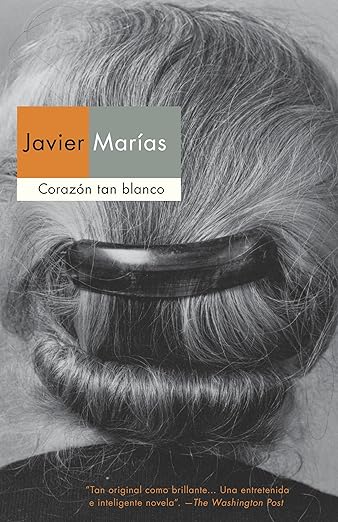
“Corazón tan blanco” (A Heart So White) is an award-winning novel that explores twisted family relationships. As a newlywed, Juan wants to know more about his father’s previous marriages, so he gradually pieces together the story behind them. Eventually, he finds out that his father was involved in the deaths of two women.
The novel blends together thoughts, conversations and events into a complicated narrative. Because of this, it’s recommended for advanced Spanish learners who want a more philosophical read.
15. “Rayuela”
Author: Julio Cortazar
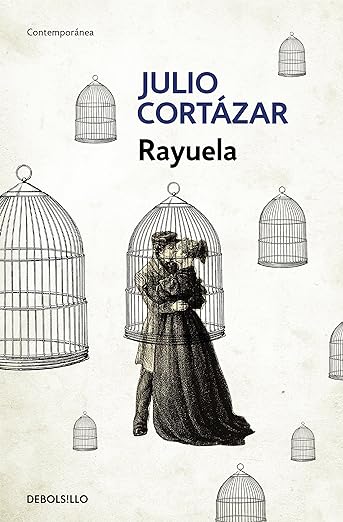
“Rayuela” (Hopscotch) is an experimental 1960’s novel that’s considered a masterpiece. It revolves around Horacio, an Argentinian intellectual and creative who lives in Paris. He often has thoughtful musings, and his relationships with women can get a bit messy.
You can read the chapters in different ways: straight through, in any order of your choice, or following a “hopscotch” pattern by the author. This is definitely for advanced learners because of its rich vocabulary and philosophical dialogues!
Now that you have a new list of books to read, you might be wondering what the next step is.
Start reading, of course!
Once you’ve begun a new book, there are different resources you can use that will complement your reading.
As you read and come across various new words, you’ll want to check their pronunciation and definition to ensure you understand them. Understanding these words correctly is vital, especially when you’re likely to read them repeatedly in these books. While you can learn some words from context, this can still leave out important aspects of a word that may not be properly shown. That’s where using another resource comes into play.
Using an app like FluentU, for example, will allow you to find the correct definition and hear an audio pronunciation with the contextual video dictionary. You can also use this to search for Spanish videos that demonstrate a specific word or phrase being used by native speakers.
Once you’ve got the proper pronunciation and you understand the definition of any new words, your second step is to study them. While you’ll actively learn new words through reading and context, you can target certain words by creating flashcards. You can use apps like Anki or Quizlet to create customizable flashcards to study with.
At the end of the day, when it comes to learning a language through a book, the most important aspect is to understand what you’re reading.
There are a lot of great Spanish-language books for teens on the market. No need to sneak off to a faraway land to discover your new favorite!
Download: This blog post is available as a convenient and portable PDF that you can take anywhere. Click here to get a copy. (Download)

















